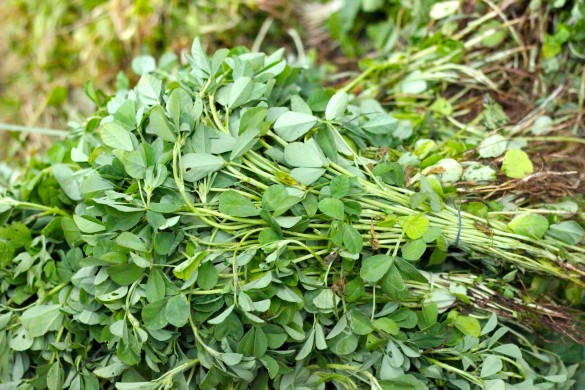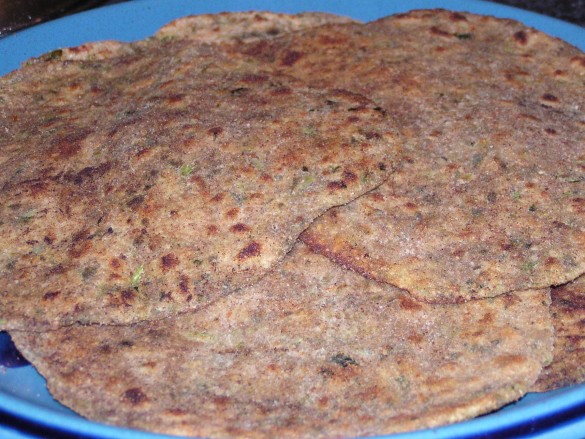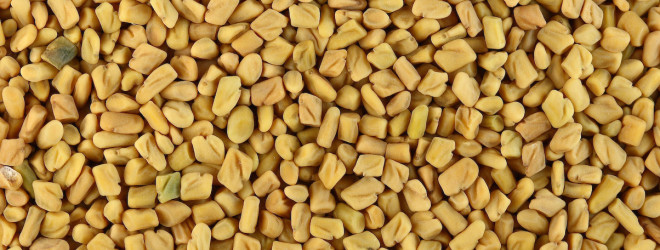A little while ago, I received this note from a colleague in India:
“I happened to read about your new book Food as Medicine. In this regard I have some information to share with you. While I was in hospital it was observed that I had mild diabetes, with normal fasting blood sugar and slightly high post-prandial glucose. For 4 months I was taking one tablet of Glimulin® (glimepiride) a day. Thereafter, I stopped it and started taking one teaspoonful of fenugreek powder suspended in one glass of water twice day. My blood glucose is now totally under control. From a search in the internet I found that several papers have reported the anti-diabetic effect of fenugreek. It is harmless and very inexpensive. I trust this letter finds you and family in the best of health.”
Fenugreek is a herb I have been using to control blood sugar in metabolic syndrome and diabetes for a number of years now, often in combination with other herbs for diabetes, including Gurmar (Gymnema sylvestre), Turmeric (Curcuma longa), Ginseng (Panax spp.), Devil’s Club (Oplopanax horridus), Guduchi (Tinospora cordifolia), and Triphala. Taken on its own, however, fenugreek still has a lot of benefit, and is both cheap and easily-available. In my book, Food As Medicine, I have a brief monograph on fenugreek:
“Fenugreek seed, herb (methi): bitter and sweet, warm in quality. Reduces vata and kapha. Used to stimulate the appetite and raise the natural fire of the body, making it useful for digestive problems including constipation, colic, parasites and hemorrhoids. Also used to dispel fatigue, strengthen the heart, and balance blood sugar. One small handful of the fresh leaf can be added as a garnish near the end of cooking. Use ½ – 1 tsp of the seed in stews.”

I frequently add fenugreek to my food, but this reader points out, it can also be used as a medicine. As a digestive aid fenugreek is useful not just because it can boost the digestive fire, but because it has a mucilaginous property it can help to lubricate the intestines and bowel. It may seem surprising that fenugreek has mucilage considering just how hard the seeds are, so to get the best effect make sure to grind the seed into a powder and infuse it in hot water. While fenugreek also adds nutrients and flavor to meals, preparing it as a hot infusion is better than mixing it with food to control blood sugar. The active ingredient in fenugreek that helps to control blood sugar is a soluble fiber called galactomannan, but more recent research suggest other molecular mechanisms for its hypoglycemic property, which are almost as potent as insulin. Fenugreek also exhibits antiinflammatory properties, supporting its traditional indication as a blood cleanser, making it useful for diseases such as arthritis and skin problems. For medicinal purposes, 1-2 teaspoons of fenugreek can be ground into a powder, and infused in a half a cup of hot water. When cool, drink the liquid and the powdered fenugreek together.
In Hindi the name for fenugreek is methi, referring to the use of both the seeds as well as the leaves. The seeds provide for a characteristically bitter-sweet taste that is reminiscent of maple syrup. This smell is due to the presence of an aromatic lactone called sotoloneone, which is extracted from fenugreek seed and used as a flavoring for artificial maple syrup. In fact, if you eat a lot of fenugreek, you may even begin to detect a maple syrup body odor, as your body excretes the solotone in your sweat. The leaves can also have this effect, but to a lesser degree. I have never noticed an issue myself, although apparently some people are more sensitive. I particularly love fresh methi leaves, which can be added to soups and stews just like you would cilantro. In Food As Medicine, I provide a recipe for methi tepla, which is a sourdough flatbread (roti) made with fresh methi leaves:
Ingredients
1 cup flour, germinated (p. 134) and roasted (p. 139)
1 cup sourdough culture (p. 145)
half cup fresh chopped methi (fenugreek)
2 tbsp. sesame or olive oil
1 tbsp. sesame seeds
1 tsp. ajwain seeds
1 tsp. turmeric powder
½ tsp. cracked black pepper
1 tsp. salt
olive oil
Directions
Grind the flour to the desired consistency using a coffee grinder or a grain mill. Mix the flour and sourdough culture together, adding in a little water as required, and knead well. Place in a bowl and drizzle a little olive oil over the surface of the dough to keep it moist. Cover with a wet cloth, let sit for several hours in a warm place, and let it ferment (2-18 hours – longer is better). After fermentation, knead the dough again, mix in fresh methi, sesame seeds, ajwain, turmeric, black pepper and salt. When mixed, break off pieces of the dough about the size of a golf ball, roll into a ball and put aside. Warm a large cast iron pan to medium heat with no oil. Sprinkle some flour onto a large flat surface such as a cutting board or a counter, and roll out each ball until it is a round, thin disc, and immediately place in the pan. Cook for approximately 1-2 minutes on each side. When golden brown, take the roti out of the pan and then place them on a hot burner very briefly until they puff up. Serves 3-4 people.

A couple of years ago, I was chatting with my friend, colleague, and co-herbalist Thomas Avery Garran about the use of fenugreek in Chinese medicine. Some Chinese sources state that fenugreek is used to boost yang energy in the body, and I was curious to see if it was used in actual practice. According to Thomas, it is used for this purpose, but it is often neglected. For an inexpensive and common herb, fenugreek perhaps seems a little out of place with expensive and exotic yang tonics such as ginseng, eucommia and deer antler. When viewed from the perspective of Ayurveda, however, in which fenugreek is used to boost metabolism, as well as reduce dryness (vata) and cold (kapha), it definitely supports its use as a yang tonic in Chinese medicine.
Lastly, I would be remiss if I didn’t mention just how useful fenugreek is as a milk-promoter (galactagogue) for new moms, possibly helping by boosting prolactin levels. In India, fenugreek often comprises a number of different home remedies for this purpose, usually combined with herbs such as fennel and ajwain. There is also some suggestion that fenugreek may enhance breast size. Like many other members in the legume family, such as red clover and soy beans, fenugreek contains phytoestrogens that mimic the effects of estrogen. As breast growth is in part dependent upon estrogen, this weak estrogenic effect combined with its galactagogue properties, fenugreek may indeed act to enhance breast size. But I wouldn’t recommend taking in large amounts for this purpose, as the hormonal effects will likely resemble premenstrual symptoms, characterized by swollen, sensitive breasts. Taken in judicious amounts by new moms, however, I would not anticipate any problems.
What is your experience with fenugreek?



